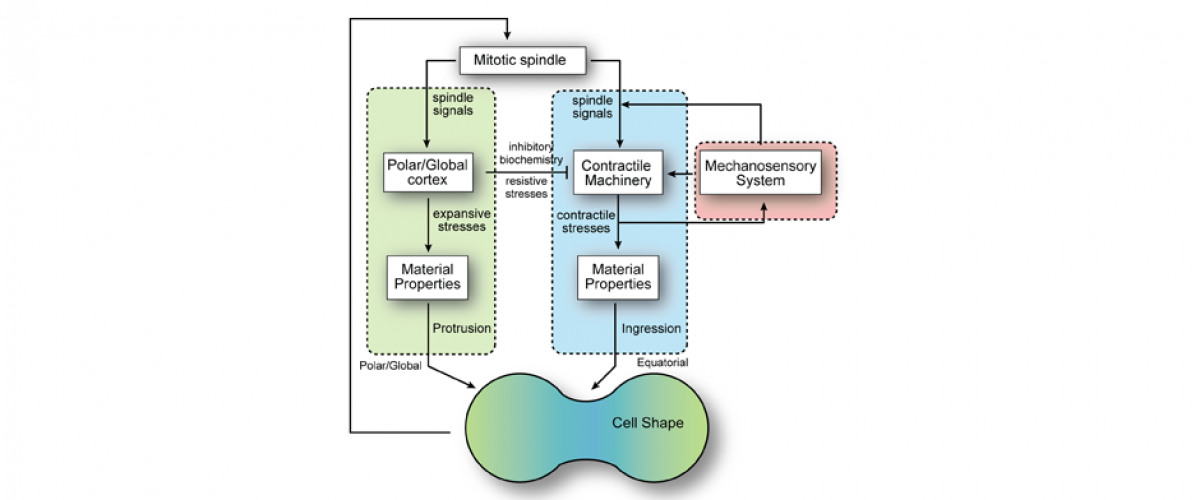
Over many years, we have deciphered the mechanochemical system that governs cytokinesis cell-shape change. While the textbook view has the mitotic spindle as the principle driver, the system is really structured as a control system with many feedback loops. The long axis rule, which was described in the 19th Century and states that the mitotic spindle will elongate along the long axis of the cell, already predicts such a feedback system. Indeed, the mitotic spindle sends cues to the equatorial and polar cortices. These cues help drive regional accumulation of equatorial and polar proteins that really exist as inverse concentration gradients across the cortex. The polar cortex proteins then define the regional viscoelasticity and resistive stresses against which the contractile equator must work. The polar cortex also generates expansive stresses, which help elongate the cell but primarily requires cell adhesion to be effective. The equatorial system defines the regional viscoelasticity of the cleavage furrow, generates contractile stresses, and is highly mechanoresponsive (senses mechanical stresses and tunes protein concentration and dynamics as a result). This mechanosensitivity endows the cell with a tremendous dynamic range of force production with about 5-fold coming from myosin II’s load sensitivity (reflected in changes in duty ratio) and another 5-7-fold coming from changes in protein concentration. Overall, the system has a 30-50-fold dynamic range in force-generating ability. The bases for these concepts may be found in Zhang and Robinson, PNAS 2005; Reichl et al. Curr. Biol. 2008; Poirier et al. PLoS Comp. Biol. 2012; and Kee et al. Mol. Biol. Cell 2012.